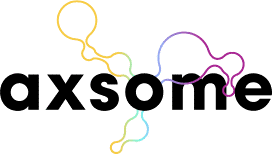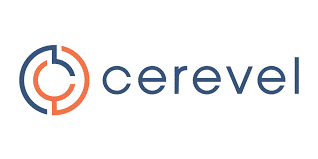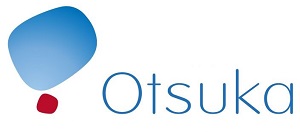Overview of Brain Stimulation Techniques for Depression in the Geriatric Population
Advances in medicine and technology have potently extended longevity insofar that the geriatric (age > 65) community represented 14.1% (44.7 million persons) of the United States population in 2013. As this statistic is projected to rise to 21.7% by 2040, a concomitant growth in the incidence and prevalence of geriatric mental health disorders, particularly depression, is also imminent. In light of a diminished efficacy and greater vulnerability to the adverse side effect profiles of pharmacological agents, explorations of neuromodulation within the geriatric population have yielded remarkably compelling results. [1]
Electroconvulsive therapy (ECT) presents as an effective and safe treatment option for severe unipolar depression in the geriatric population. Two randomized controlled trials (RCTs) that compared medications versus ECT in this age demographic showed that ECT had higher rates of remission (63.8% vs. 33.3% for medications), and remission was achieved earlier than with medications alone (ECT: 3.1+1.1 weeks vs. medications: 4.0+1.0 weeks). In addition, one study showed that within 5 weeks, ECT was 8 times more likely to achieve remission than a medication after adjusting for clinical and demographic differences. [2] Studies looking at bitemporal (BT) and right-unilateral (RUL) ECT have shown higher remission rates in the geriatric population relative to the younger population. [2,3] The PRIDE study is an on-going study that has shown high remission rates (83.8%) with early improvements of symptoms using right-unilateral ultrabrief pulse (RUL-UB) ECT with venlafaxine in the acute phase of patients > 60 years old with unipolar depression. [2]
Differences in efficacy of electrode placement are difficult to determine due to the limited quality of current studies. Overall, most studies have shown no difference in efficacy of electrode placement for brief pulse ECT, but a sub-analysis of a large RCT showed there may be higher remission rates with BT compared to bifrontal (BF) ECT (75% versus 50%). In the elderly population, pulse-width is an important consideration due to its potential impact on cognitive functioning. Mixed-age samples using RUL-UB ECT showed similar efficacy to brief pulse ECT, but had lower rates of cognitive impairment. [2] RUL-UB ECT generally has a lower seizure threshold than brief pulse ECT, which can be beneficial in older patients, who typically have higher seizure thresholds and are prone to greater increases in the seizure threshold during a course of ECT. [2,3]
The impacts of ECT on cognition and memory are important considerations in this population. Data on cognitive outcomes with ECT has mixed results, but in general, an increased risk is seen with BT ECT (vs. unilateral), more treatments per week, and longer pulse-widths. [2,3] Those with higher “cognitive reserve” (e.g., higher education, occupational attainment), were shown to have less cognitive side-effects following ECT. The most concerning adverse effects are cardiovascular and fall risk in the elderly. [2] Prior cardiac conditions may need evaluation before a course of ECT.[2,3] The fall risk is likely underestimated and is more prevalent in patients with complicating factors (greater age, multiple psychotropic medications, cardiac arrhythmias, etc.). Overall, no absolute contraindications or age limitations have been found for ECT. [2] Data on maintenance ECT with medication is limited in this population, but may prove to be important and is currently being addressed in the PRIDE study. [2]
In comparison to ECT, repetitive transcranial magnetic stimulation (rTMS) is a relatively nascent modality that is slowly beginning to garner more evidence in its favor. As mentioned above, ECT carries a staggeringly high efficacy rate; accordingly, four meta-analyses (mean age range 31.0-63.6 years) revealed ECT was superior to rTMS in the short-term as indicated by improvements in rating scale scores. ECT induces remission more rapidly and this could further explain the differences in initial response rates, especially because the differences between ECT and rTMS were decreased when treatment periods were extended to four weeks.[4]
Although some analyses have demonstrated an increased efficacy of rTMS in the geriatric population, the existence of mixed results and limited data render age to be an inconclusive predictor of response rates to rTMS at the present time. [2] Due to the paucity of research investigating rTMS, only four RCTs to date have specifically targeted the geriatric population (mean sample age > 60). Of these, two studies did not show a difference between active and sham stimulation. It is worth noting, however, the other two studies employed 18000 instead of 12000 pulses (higher intensity and dose) to confer a substantial benefit (approximately 37% responders), which was also demonstrably more therapeutic in the older age group with vascular depression relative to the younger age group. In contrast, many trials that found an age-related reduction in efficacy of rTMS employed only 2500-3000 pulses. [4]
Factors found to influence response rates include brain atrophy, stimulation parameters, and clinical profile. [2,4] Various findings have suggested two contrasting effects of brain atrophy on rTMS efficacy: 1) a magnetic field that diminishes in strength as it traverses a larger distance from the scalp to the cortex in an atrophic brain, and 2) a paradoxically greater excitability of the smaller brain that enables even weaker intensities to stimulate the cortex. To overcome this potential obstacle of frontal atrophy, a stimulus intensity of 120% times the motor threshold (MT) is now applied to the left prefrontal cortex for depression in most clinics. This increased distance-adjusted stimulus intensity has been shown to be safe and efficacious, though further studies to investigate the efficacy of the 120% MT protocol are warranted.[4] Analyses have revealed the elderly experience greater improvement with more sessions, and this likely compensates for the ostensibly decreased effective dose in this population. The clinical profile of the depressed patient is a significant factor to consider in the evaluation of rTMS efficacy. Relative to ECT, the presence of psychotic features diminishes the efficacy of rTMS (ECT had 100% response vs. 22.22% response in rTMS after 4 weeks), whereas rTMS tends to perform similarly to ECT in non-psychotic patient samples.[2] Treatment resistant depression as a moderating variable has also been examined, and contrasting data has disallowed a conclusion for rTMS efficacy on this form of depression. [4]
Cognitive impairment is prevalent in the geriatric population, and the risk of dementia after an episode of depression is estimated to increase by nearly 87% over a 25-year period. Studies have failed to document significant negative effects of rTMS across a range of cognitive domains. In fact, the antidepressant effects of rTMS have been proposed to improve cognitive performance, with some studies suggesting a therapeutic response lasting almost three months.[4] For instance, improvements in attentional flexibility were found in those with vascular depression. Performance improvement was not associated with mood, suggesting a possible cognitive enhancing effect with left dorsolateral prefrontal cortex stimulation. [2,4]
No studies have systematically examined the safety of rTMS in geriatric depression, but primarily minor side effects (headaches, dizziness, conjunctivitis, crying) have been reported; major side effects (seizures) are rare. Overall, rTMS can be extrapolated to be safe and tolerable in this population, although more research is needed. [2,4]
Other less-known brain stimulation techniques such as transcranial direct current stimulation (tDCS), vagal nerve stimulation (VNS), deep brain stimulation (DBS) and magnetic seizure therapy (MST) may eventually be applied clinically in the elderly population; however, data is currently limited. tDCS has shown promising findings in preliminary research, with one study showing a response rate of 48% in older patients (2 mA current and 30 treatments over 6 weeks). Similar to rTMS, benefits of tDCS include cognitive enhancement independent of mood and the absence of major side effects. MST may prove to be useful in the future, with a similar efficacy to RUL brief pulse ECT in mixed-aged samples and fewer cognitive side effects. [2]
In the elderly population, medications are overused and polypharmacy is an often overlooked concern. ECT and rTMS provide effective alternatives for treating depression in this population and a steadfastly growing volume of patients is poised to benefit from larger implementation of these therapeutic modalities. Overall, ECT remains an effective treatment for geriatric depression, particularly in the presence of severe or psychotic depression. rTMS appears to be a beneficial treatment in non-psychotic depression; and relative to ECT, it carries the advantages of being non-invasive and endowing greater tolerability – factors especially appealing to the geriatric population. Further inquiry is required to determine optimal treatment guidelines and parameters, but current data approves a judiciously greater employment of ECT and rTMS in the treatment of geriatric depression.[2]
References:
[1] “Administration on Aging (AoA).” Aging Statistics. Administration for Community Living, 31 Dec. 2014. Web. 27 Oct. 2015.
[2] Galvez, V., Ho, K. A., Alonzo, A., Martin, D., George, D., & Loo, C. K. (2015). Neuromodulation therapies for geriatric depression. Curr Psychiatry Rep, 17(7), 59.
[3] Kerner, N., & Prudic, J. (2014). Current electroconvulsive therapy practice and research in the geriatric population. Neuropsychiatry (London), 4(1), 33-54.
[4] Sabesan, P., Lankappa, S., Khalifa, N., Krishnan, V., Gandhi, R., & Palaniyappan, L. (2015). Transcranial magnetic stimulation for geriatric depression: Promises and pitfalls. World J Psychiatry, 5(2), 170-181.
Mike Norred
Senior Medical Student, University of Central Florida College of Medicine, Orlando, Florida, United States
Pranav Jagtap
Senior Medical Student, Wayne State University School of Medicine, Detroit, Michigan, United States
Excerpted article as reprint from IPA’s newsletter,
the IPA Bulletin, Volume 32, Number 4









